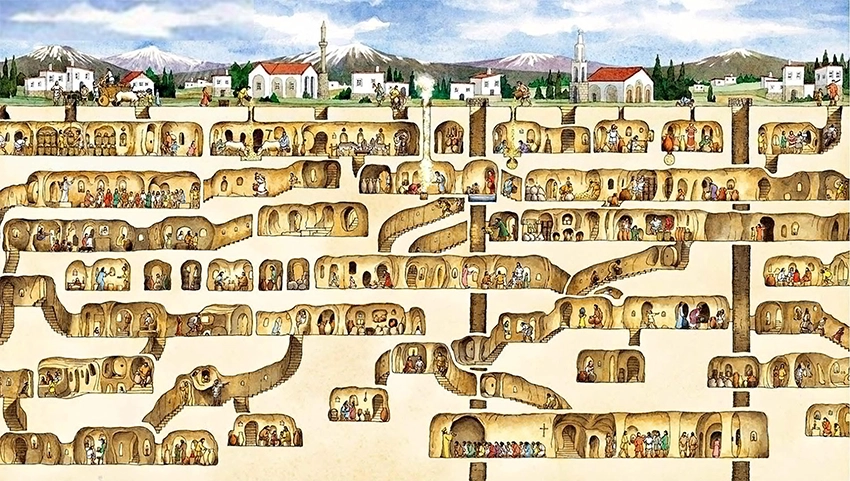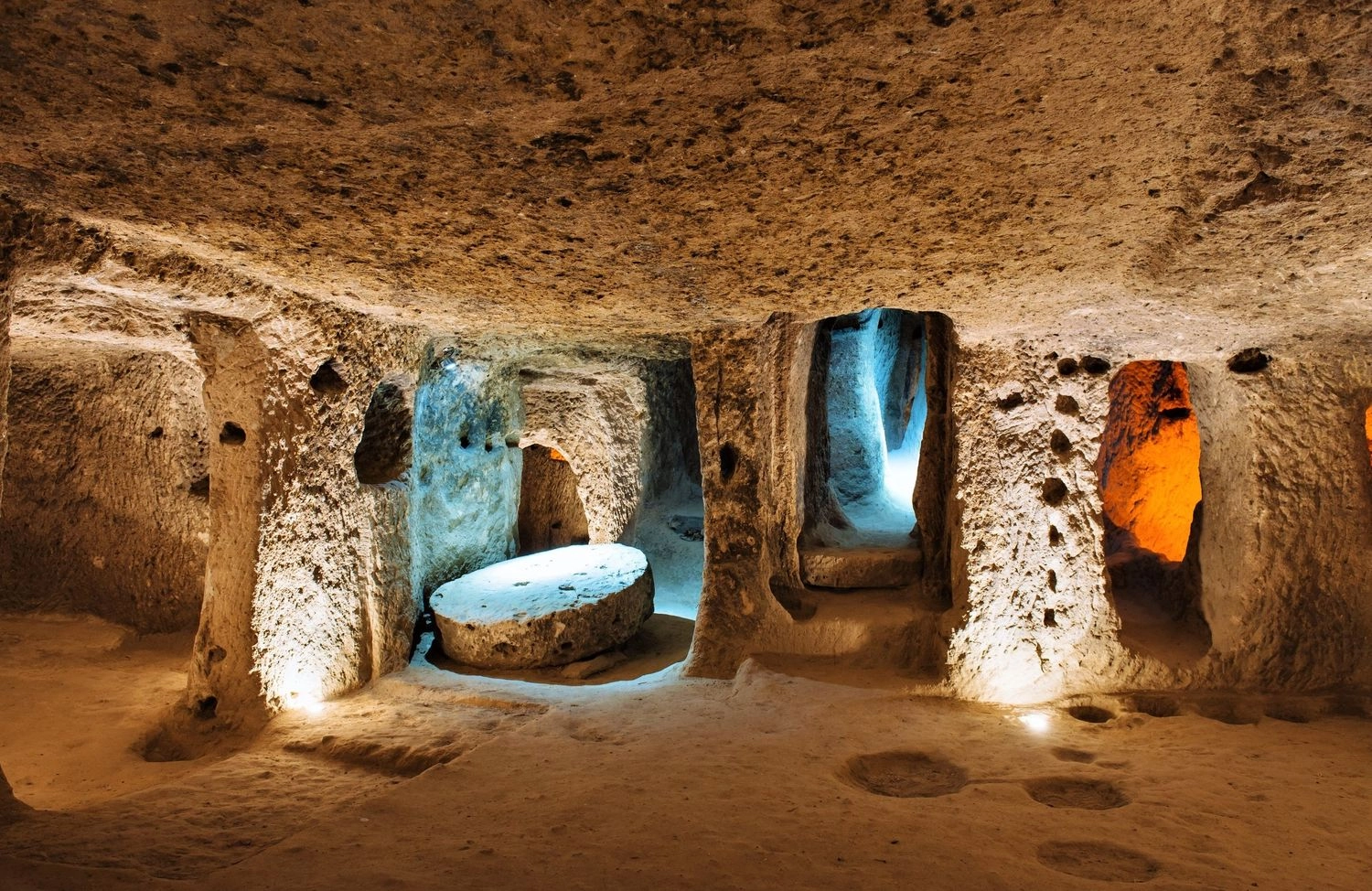Derinkuyu Underground City
Derinkuyu Underground City – A Civilization Beneath Cappadocia
History and Christian Heritage
Derinkuyu is the largest and deepest underground city in Cappadocia. While its earliest layers may date back to the Phrygians (8th century BC), it gained importance in the early Christian period. From the 2nd century AD, Christian communities fleeing Roman persecution settled in Cappadocia and used Derinkuyu as a refuge where they could live, worship, and educate in safety.
The city was also active during the Byzantine era, hosting monastic communities. It takes its name from deep wells that reach 60–70 meters. Rediscovered in 1963 during a house renovation, Derinkuyu opened to visitors in 1967 and remains one of the region’s most remarkable archaeological sites.

Architecture and Defense Systems
Carved into soft volcanic tuff, Derinkuyu descends to about 85 meters with 12–14 levels, of which 8 are open to visitors today. Only about 10% of the complex has been explored.
- Upper levels: stables, kitchens, wine presses, and storage rooms.
- Deeper levels: living quarters, meeting halls, and a cross-shaped underground church.
- Missionary School: A vaulted hall with adjoining monk cells.
- Ventilation Shaft: 55 meters deep, serving both air circulation and water supply.
Defensive features include rolling stone doors at tunnel entrances and blind wells designed to prevent poisoning attempts. Oral tradition suggests that Derinkuyu was connected to Kaymaklı Underground City by a long hidden tunnel.

Visitor Experience and Tips
- Passages: Narrow and steep, often allowing only one person at a time. Visitors with claustrophobia or respiratory issues should proceed cautiously. Average visit time is around 1 hour.
- Temperature: A constant 13°C year-round bring a light jacket.
- Best Time: Early morning or late afternoon to avoid summer crowds.
- Photography: Impressive shots include the giant stone doors and spiral staircases. Use high ISO settings instead of flash.
- Safety: Floors can be damp; wear shoes with good grip.
Location, Hours, and Admission
- Location: Derinkuyu town, 30 km from Nevşehir. Accessible by car or minibuses from Nevşehir.
- Hours: Summer (Apr–Oct): 08:00–19:00 | Winter (Oct–Apr): 08:00–17:00. Last entry 45 minutes before closing.
- Admission: Free with Museum Pass. Approx. €15 for foreign visitors (2025). Check official sources for updates.
Near the entrance stands the 19th-century St. Theodoros Trion (Üzümlü) Church, reflecting the Orthodox past, though it is not open to visits.
Suggested Itineraries
Derinkuyu is often included in the “Green Tour”, combining Ihlara Valley, Selime Monastery, and Narlı Lake for a full-day experience. After the visit, local shops in Derinkuyu town offer handicrafts and souvenirs.
Conclusion
Derinkuyu Underground City is not just a shelter but a complete world carved beneath the earth an extraordinary testimony to human resilience, faith, and ingenuity, hidden in the heart of Cappadocia.



